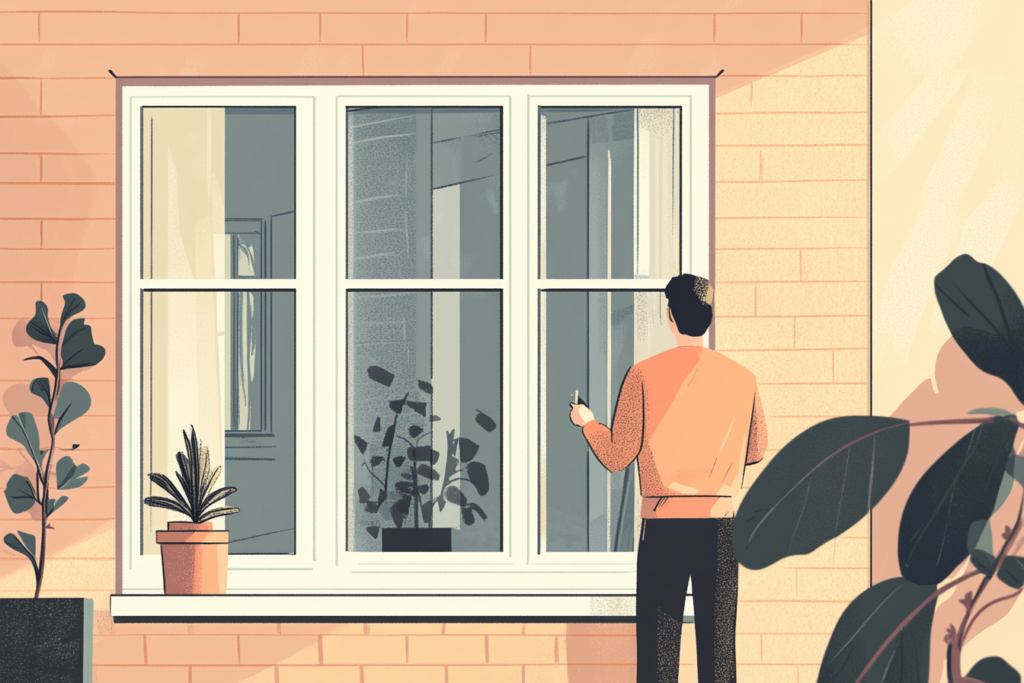Living in a noisy environment can disrupt your peace and productivity, whether you’re trying to focus on work, sleep, or just relax. If you live near busy streets, train tracks, or in a densely populated area, soundproofing your windows is one of the most effective ways to reduce noise pollution in your home and allow you to fully unwind.
Since windows are one of the main sources of sound entry, investing in proper soundproofing techniques can transform your living space into a more tranquil environment. Keep reading as we share eight soundproofing techniques and materials that you can use to make your home quieter.
Why Soundproofing Windows is Important
Windows are likely the prime suspect for noise intrusion because they are thinner and often have gaps around the frame. Sound waves can also travel easily through glass, small cracks, and gaps, allowing external noise to come in through several different arenas.
Soundproofing your windows can help:
- Improve comfort and sleep quality by minimizing outside noise.
- Increase privacy by blocking noise both entering and leaving your home.
- Boost property value as noise reduction can be a significant selling point in urban environments.
How Soundproofing Windows Works
Soundproofing involves both blocking and absorbing sound. Blocking sound requires creating a barrier that prevents sound waves from traveling through the window while absorbing sound involves using materials that reduce the amount of sound bouncing around your home. Effective window soundproofing uses both techniques in combination to create the best result.
Soundproofing Techniques for Windows
Here are several proven methods to soundproof your windows, ranging from simple DIY projects to more advanced solutions.
1. Seal Gaps and Cracks Around the Window Frame
One of the easiest and most affordable ways to reduce noise is by sealing any gaps or cracks around the window frame. Even tiny gaps can allow sound to seep through.
Materials:
- Weatherstripping: This inexpensive option can be applied to the window edges where the frame meets the glass. It’s durable and helps seal gaps effectively and easily.
- Acoustic Caulk: Use caulk to seal any small cracks or gaps around the window frame. Unlike standard caulk, acoustic caulk remains flexible, which helps maintain the seal over time as windows expand and contract with temperature changes.
Sealing gaps with weatherstripping and caulk will reduce noise while also improving energy efficiency by preventing drafts.
2. Install Double or Triple Pane Windows
If you have older windows, they are likely single-paned and let a lot of sound and air through. Upgrading to double-pane or triple-pane windows is one of the most effective ways to block sound. These windows have more than one layer of glass with air or gas (often argon or krypton) between the panes, which acts as an insulating barrier against noise.
- Double-pane: These windows consist of two panes of glass with a small space between them, providing much better sound insulation than single-pane windows.
- Triple-pane: For even greater noise reduction, triple-pane windows include an extra pane of glass, offering superior soundproofing. While these are more expensive, they are ideal for homes in extremely noisy environments, such as near highways or airports.
3. Use Soundproof Window Inserts
A window insert is a removable panel made from glass or acrylic that fits inside your existing window frame. These inserts create an additional barrier to sound and are designed to reduce noise significantly. They’re a good option for renters or homeowners who don’t want to permanently alter their windows.
- Benefits: Window inserts can reduce noise by up to 50-70%, and they’re typically more affordable than replacing your windows entirely.
- Installation: They are simple and easy to install and remove and can also help with energy efficiency by reducing heat loss through the windows.
4. Install Heavy-Duty Soundproof Curtains
Soundproof curtains, also known as acoustic or thermal curtains, are made from dense, heavy materials that help absorb sound waves. They are an affordable and easy-to-install solution for reducing external noise.
- Materials: Look for curtains made from multi-layered fabric or materials like velvet or polyester with a mass-loaded vinyl core, which increases the curtain’s density and sound-blocking ability.
- Additional Benefits: Besides blocking sound, these curtains also help insulate your home by keeping heat in during the winter and blocking sunlight during the long summer days and are great for kids who you want to put to bed when it is still light outside.
5. Use Acoustic Window Panels
Acoustic panels are designed specifically for soundproofing and can be installed over windows. These panels are typically made from sound-absorbing foam or other materials damping sound vibrations.
- Foam panels: Soft foam panels can be placed around or over the window to absorb incoming sound waves, reducing echoes and noise.
- Magnetic panels: Some acoustic window panels use magnetic strips to attach easily to the window frame, allowing for easy installation and removal.
While acoustic panels are effective, they are best used in conjunction with other soundproofing methods, as they primarily help absorb sound rather than block it.
6. Apply Window Film
Soundproof window film is a transparent material applied directly to the window’s surface. It helps reduce noise transmission by adding a thin insulating layer over the glass.
- Advantages: Window film is relatively inexpensive and can be used on any type of window, making it a great solution for renters or those on a budget.
- Installation: The film can be applied easily and is less intrusive than other soundproofing methods.
While window film may not reduce noise as much as double-pane windows or inserts, it can still help lower the amount of sound that enters through the glass.
7. Install Storm Windows
Another effective way to soundproof your home is by installing storm windows. These are secondary windows installed outside of your existing windows, creating an additional layer of protection against sound.
- Benefits: Storm windows can reduce noise transmission and provide better insulation. They also protect windows from the elements, extending their lifespan.
- Types: Choose storm windows made with laminated glass for the best soundproofing results, as laminated glass is specifically designed to reduce noise.
8. Add Mass-Loaded Vinyl
Mass-loaded vinyl (MLV) is a dense, flexible material that blocks sound. It’s commonly used in walls and floors but can also be applied to windows for additional soundproofing.
- How it works: MLV adds mass to the window, which helps block sound vibrations. It can be put directly to the window frame or even sewn into curtains or blinds for added sound reduction.
MLV is versatile and can be used alongside other soundproofing methods for better overall performance.
Conclusion
Soundproofing your windows can dramatically reduce the amount of noise that enters your home, improving your quality of life and creating a more peaceful environment. Whether you’re looking for a quick DIY solution like soundproof curtains or a more permanent fix like installing double-pane windows, plenty of options are available to suit your budget and needs.
To achieve the best results, consider combining multiple techniques, such as sealing gaps, using window inserts, and adding heavy-duty curtains. By investing in soundproofing solutions, you’ll reduce noise, improve energy efficiency, and, in turn, increase the overall value of your home.
You might also be interested in: 10 Signs It’s Time to Replace Your Windows




